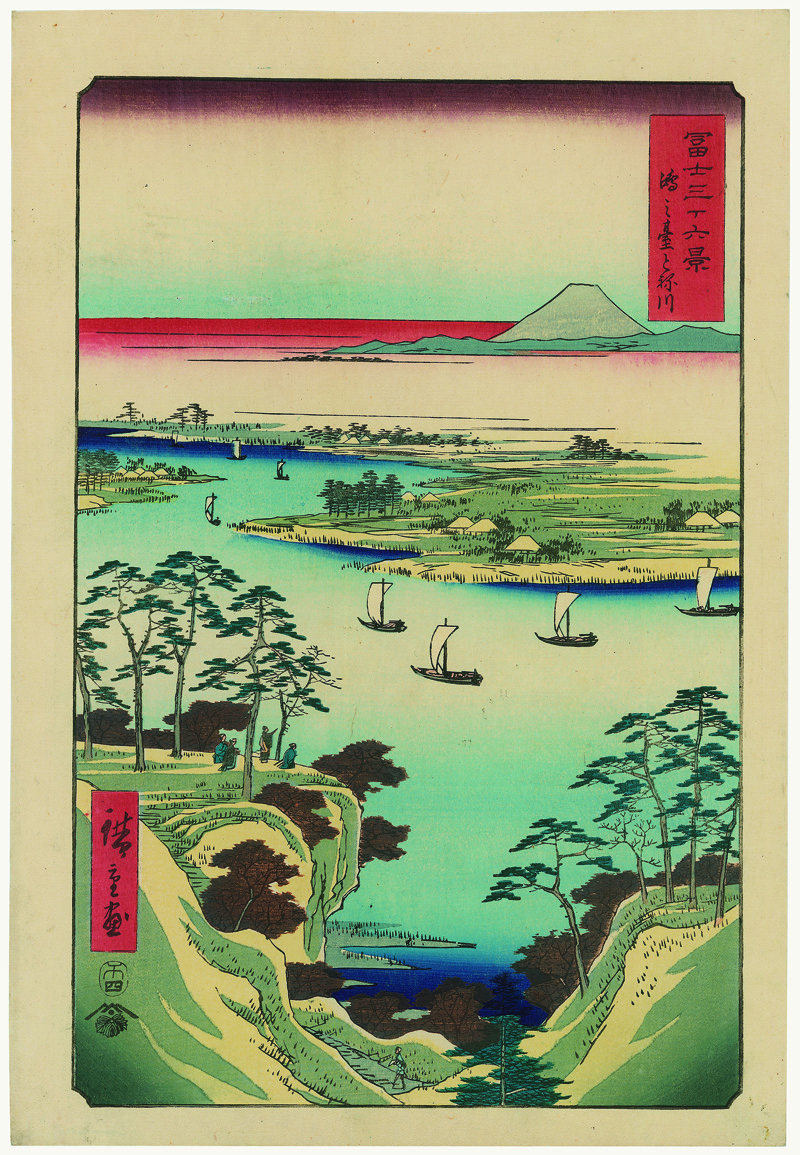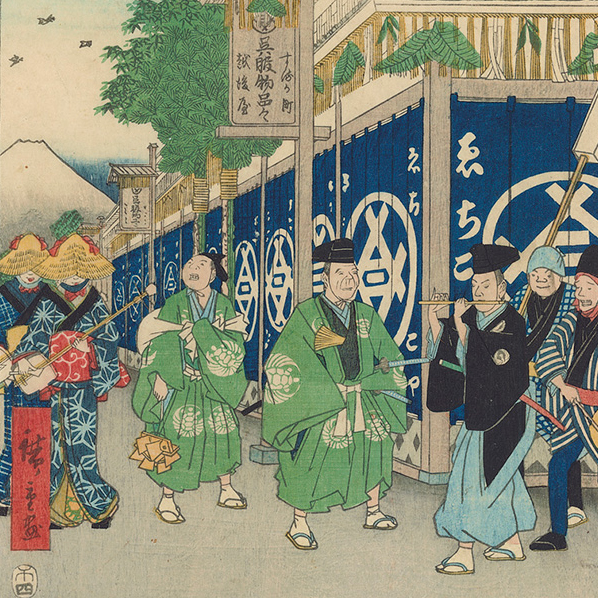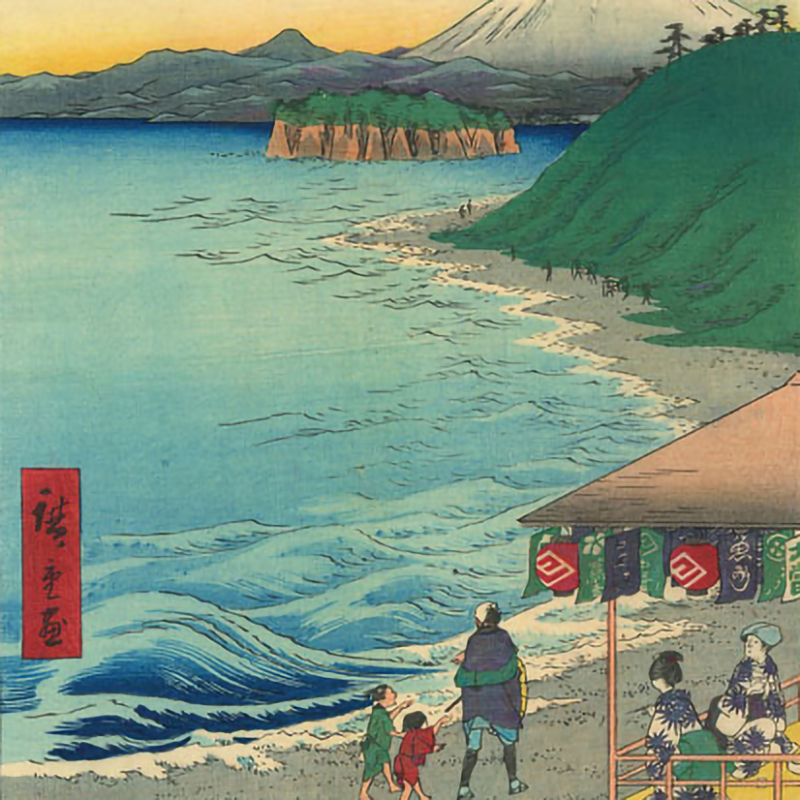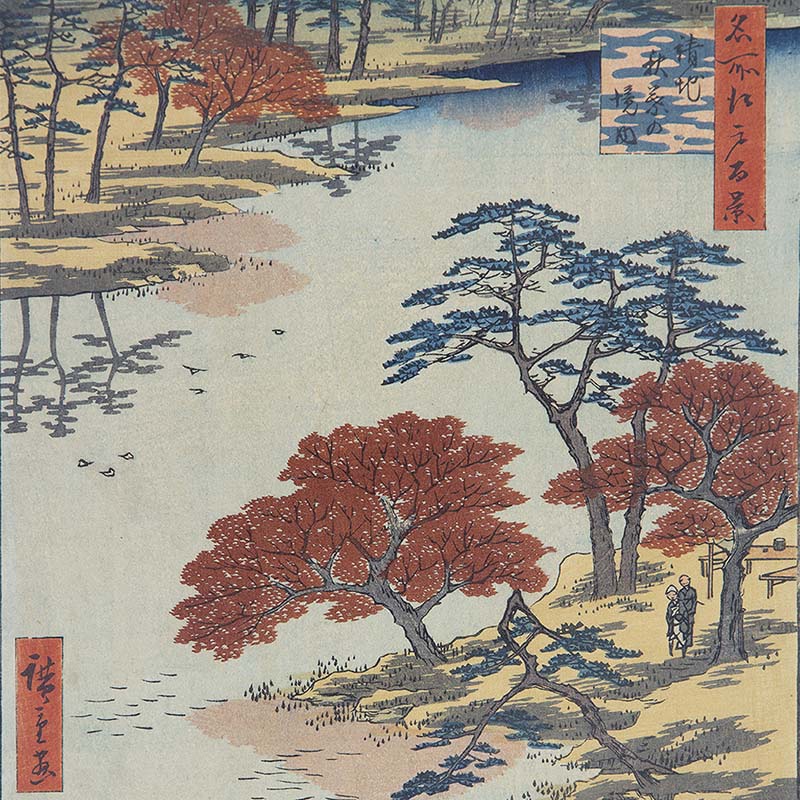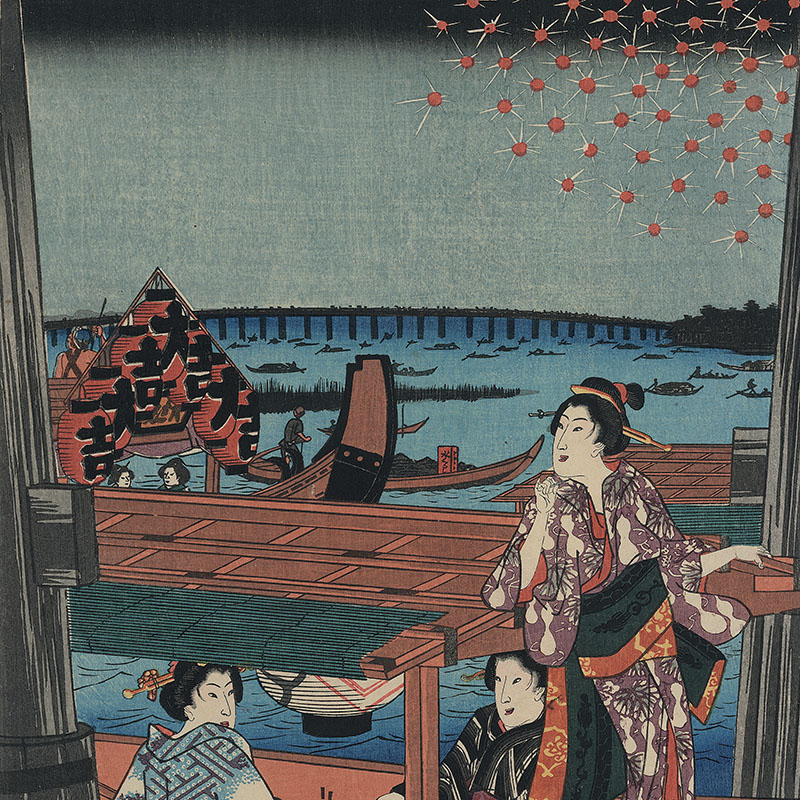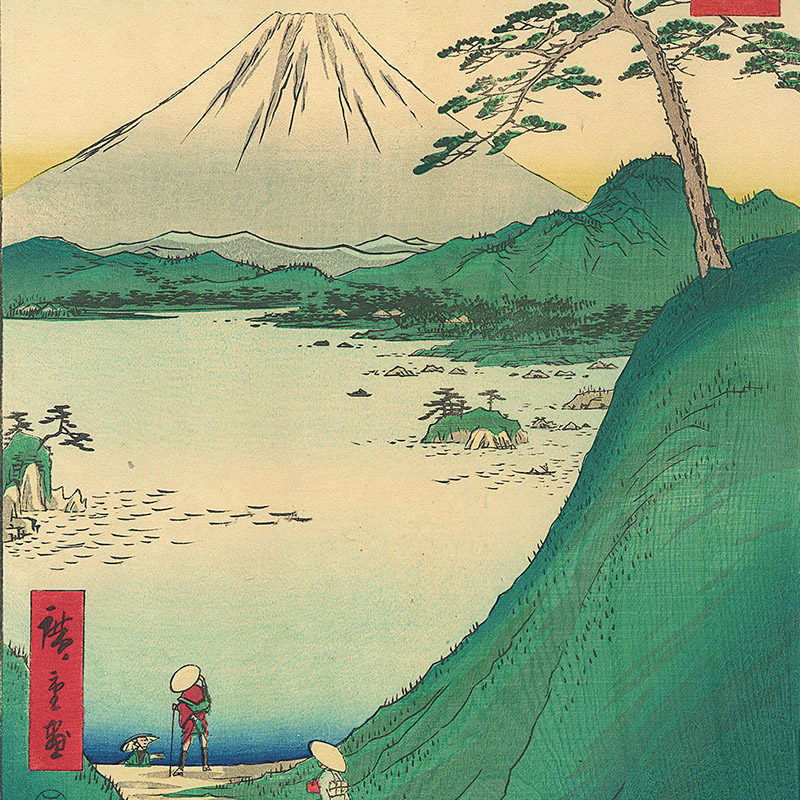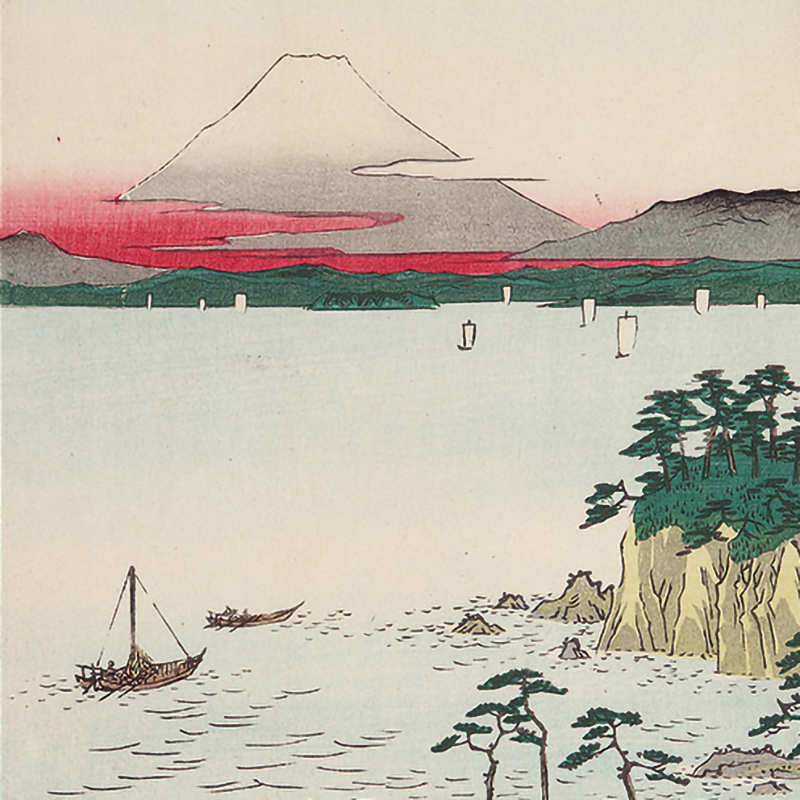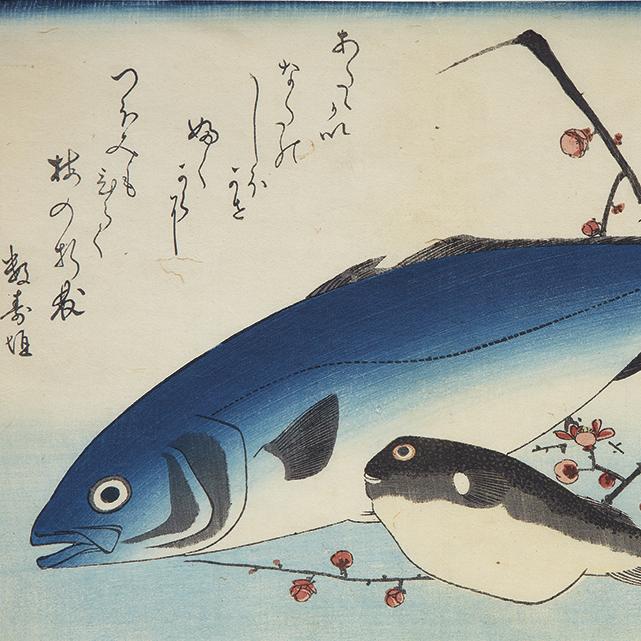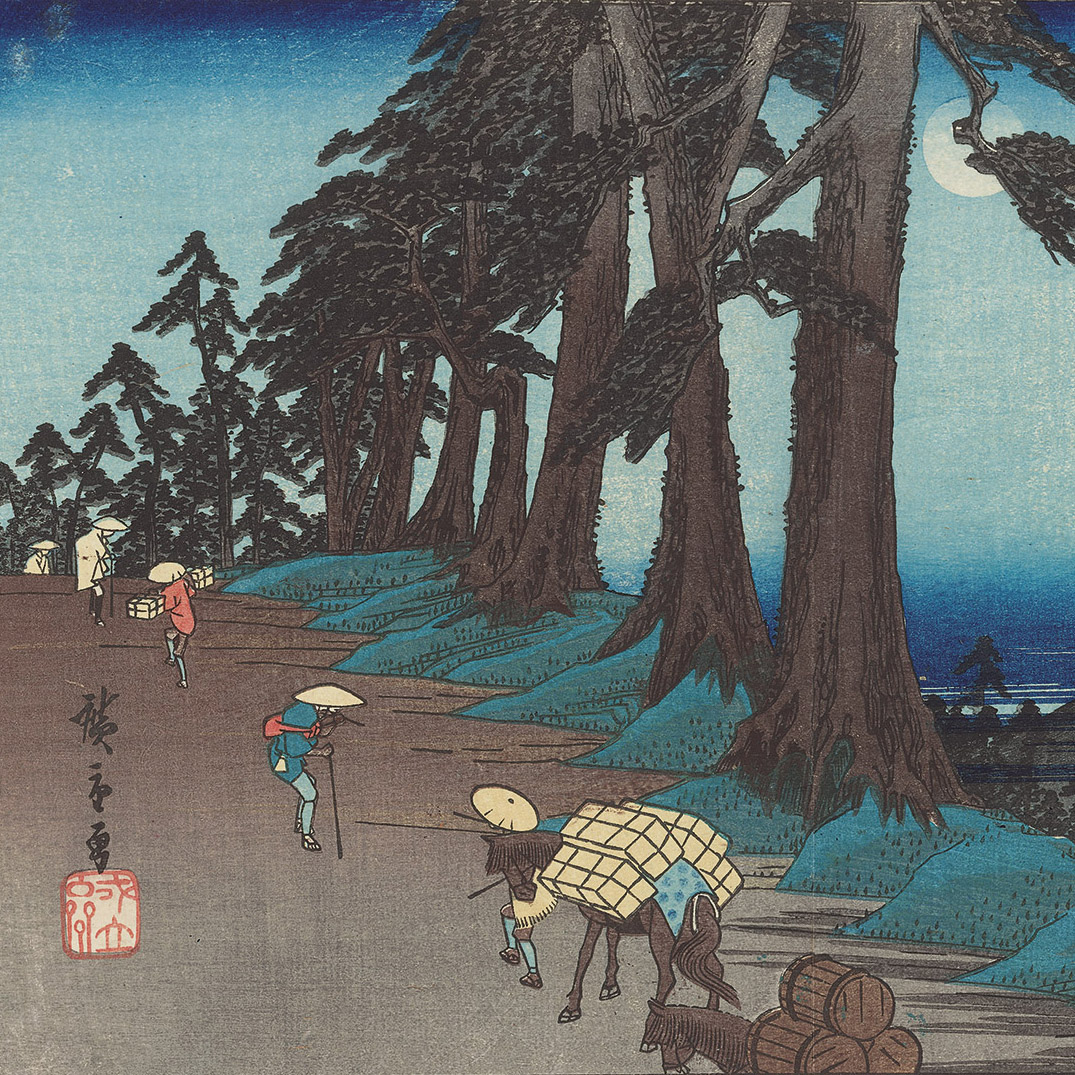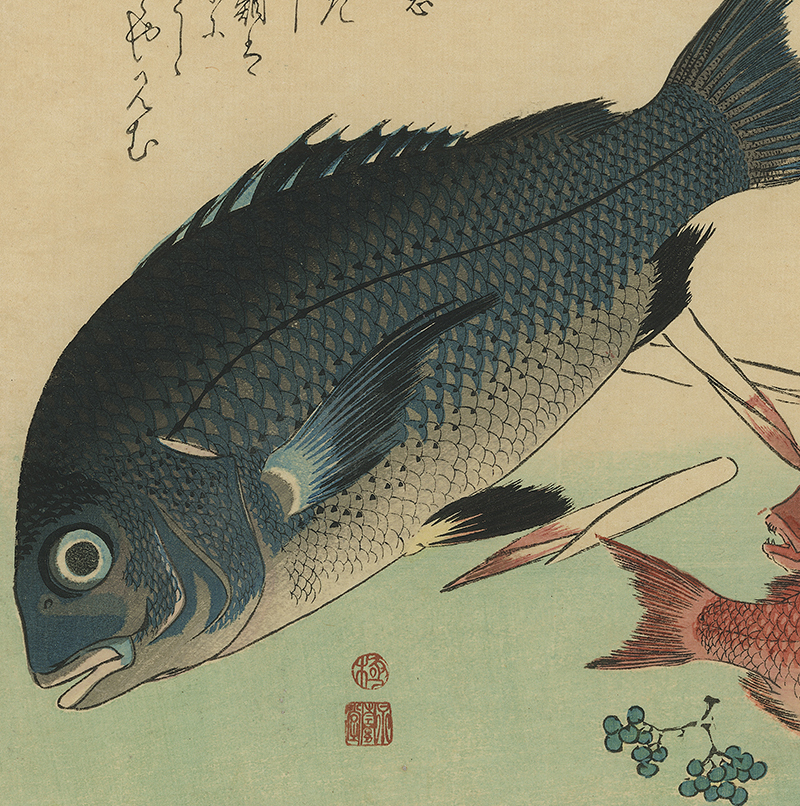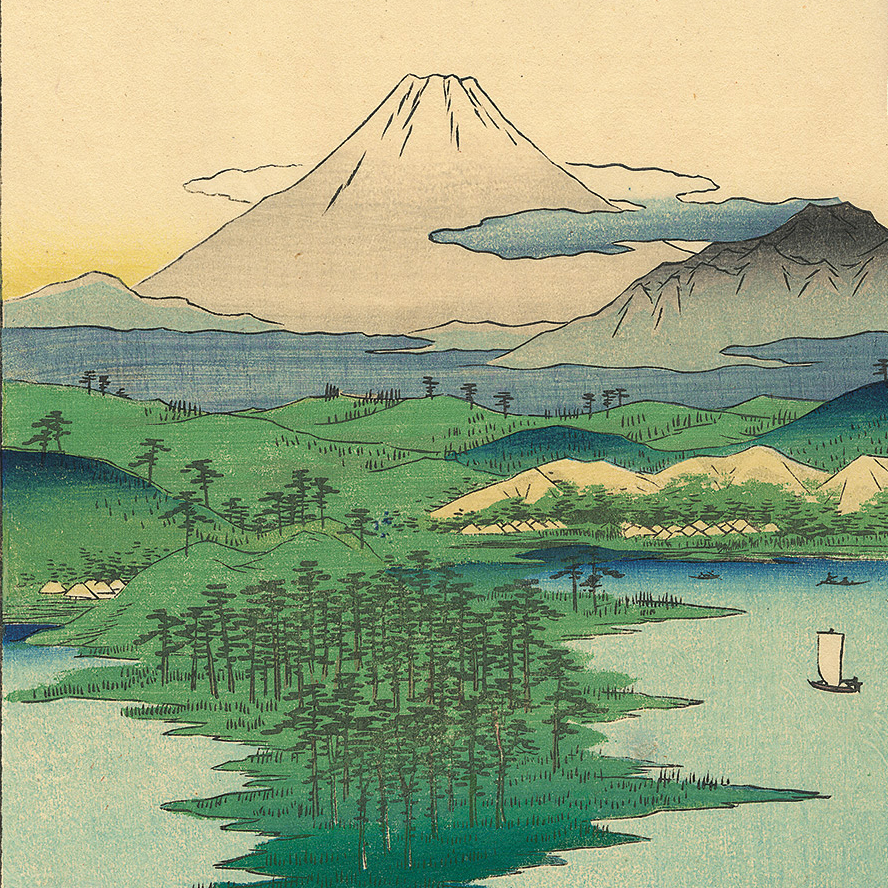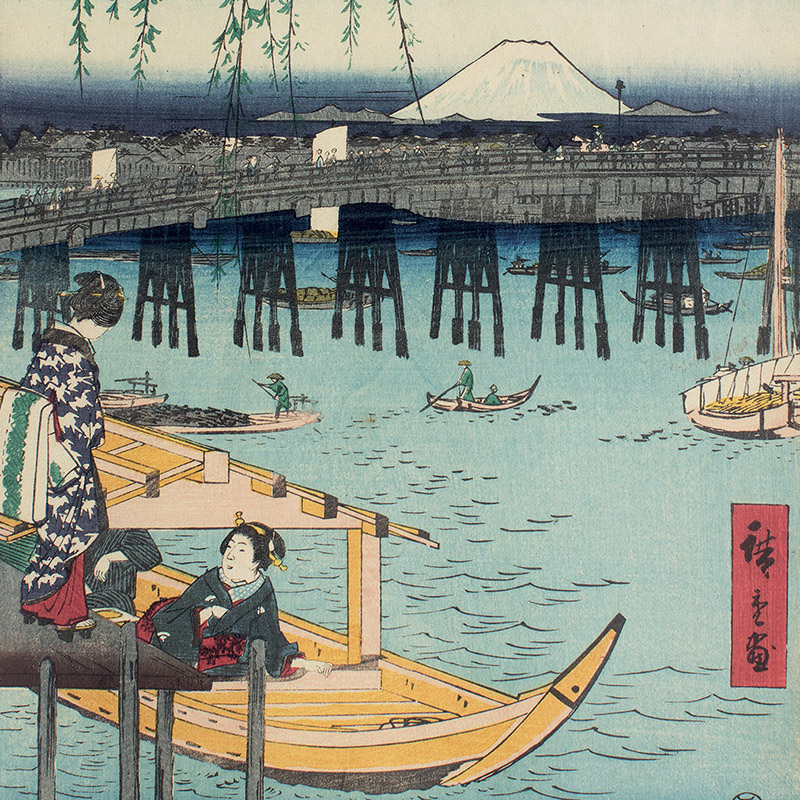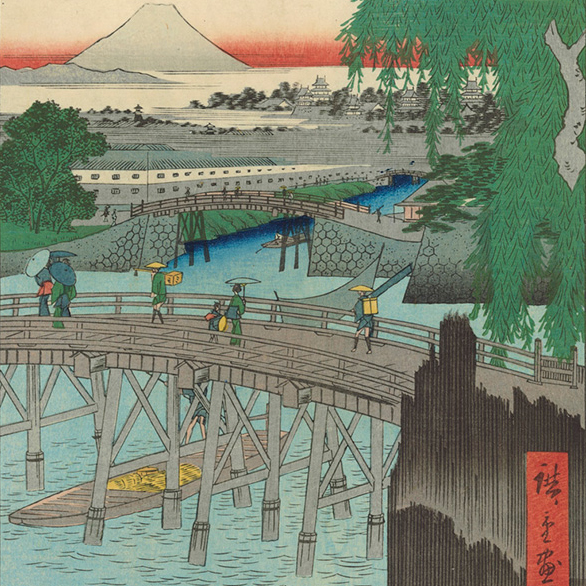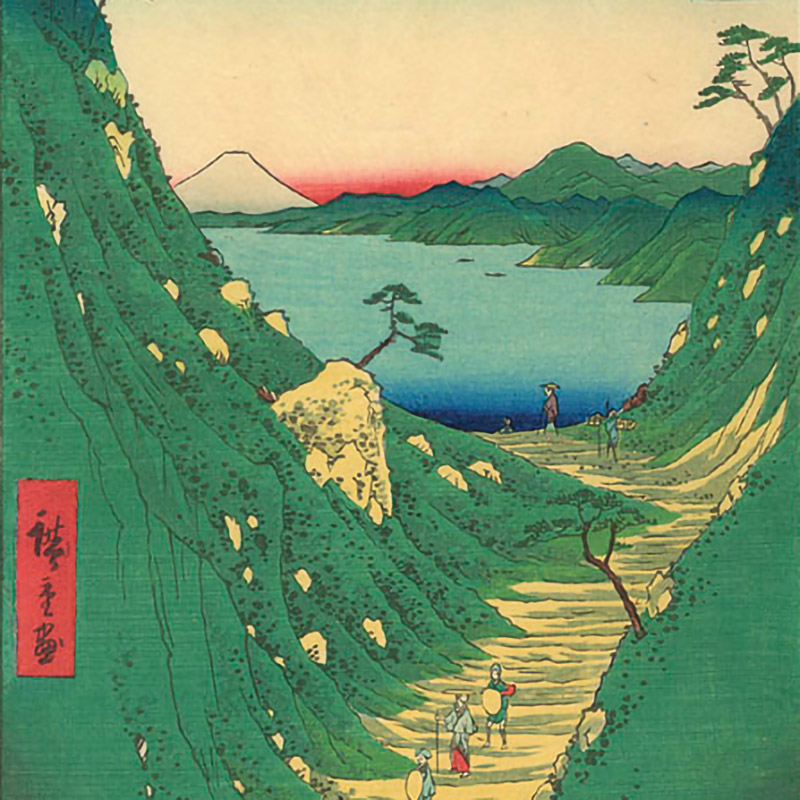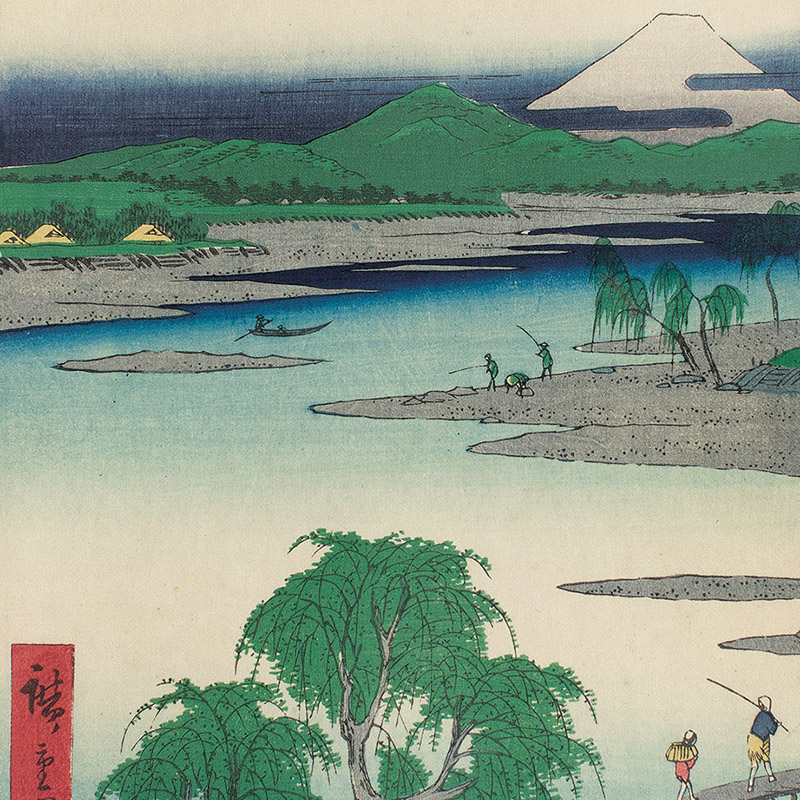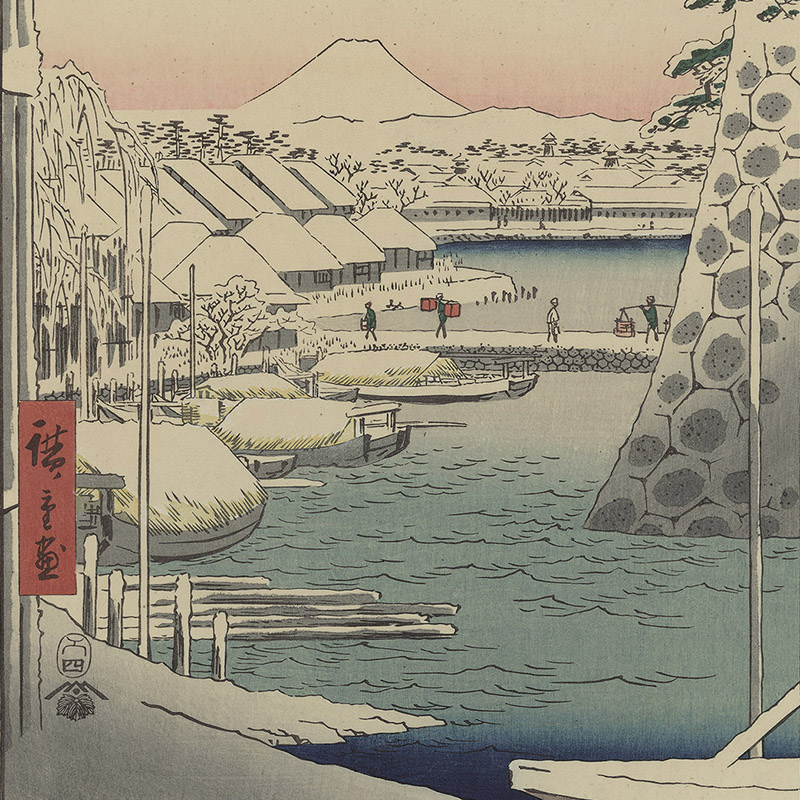Utagawa Hiroshige
1797 - 1858
1858
Vertical ōban, 377 x 258 mm
Van Vleck p.106
Signed: Hiroshige ga
Publisher: Tsutaya Kichizô
Date seal: 1858/4
Series: Thirty-six Views of Mount Fuji, 11th plate of the series - Fuji Sanjûrokkei
Very fine impression, colour and condition, full margins.
Beautiful river scenery in the autumn, maple trees changing with the season. Viewers on the hilltop enjoying the lovely view of Fuji in the distance.
In 1852 Hiroshige drew a first series of 36 Views of Mount Fuji, Fuji Sanjûrokkei, in chuban yoko-e format, published by Sanoki. But it is toward the end of his life that the artist began to draw two important series dedicated to Mount Fuji. He draw simultaneously 36 views, to be published in ?ban format sheets and secondly a set of 100 drawings for inclusion in several books; but this second work was not been completed, due to the death of its author. The 36 prints were published by Tsutaya Kichizô, one of the best publishers of the time, who has, in 1855, published two series by Hiroshige dedicated to the Tokaido Road. All drawings ready to be published have been subjected to censorship in the spring of 1858 and it is likely that Hiroshige drew the series in 1857 and in the early 1858, and that Tsutaya Kichizô had the project to publish the prints separately but on a relatively short period. Thus a first edition took place in 1858. In the spring of 1859 Tsutaya published again the entire series, this time as an album preceded by a table of contents made by Shumba Santei which contains the title of each of the 36 prints.
For other impressions at the Museum of Fine Arts in Boston see the accession number 11.26318.
Information on the master
Born in Edo in 1797, Hiroshige whilst still a teenager, was allowed to work in the studio of Utagawa Toyohiro, an artist with a preference for classical and landscape subjects. He studied also Nanga painting under the artist Ooka Umpo. In the 1812 he adopted the name Hiroshige. The first prints to be published under this name were images of beautiful women, a few surimono and landscapes in small format. In 1831 Hiroshige designed a successful series of Sights of Edo. In 1832 he accompanied the annual procession from Edo to the emperor in Kyoto along the Tokaido. During the journey, he sketched the scenes which he later put into the fifty-five prints which made up the celebrated series of views of the fifty-three post stations on the route. The series was revolutionary, the scenes had a naturalness and sense of immediacy that provoked instant popular appeal. This established Hiroshige as the painter of Tokaido scenes and, subsequently, he produced some thirty series on the same theme. Many highly successful landscape series would follow such as the Sixty-nine Stages on the Kiso Highway, the One Hundred Famous Views of Edo, the Thirty six Views of Mount Fuji. In his declining years, in addition to landscapes, he created an unique style in depicting birds and flowers.
Other works of the master
